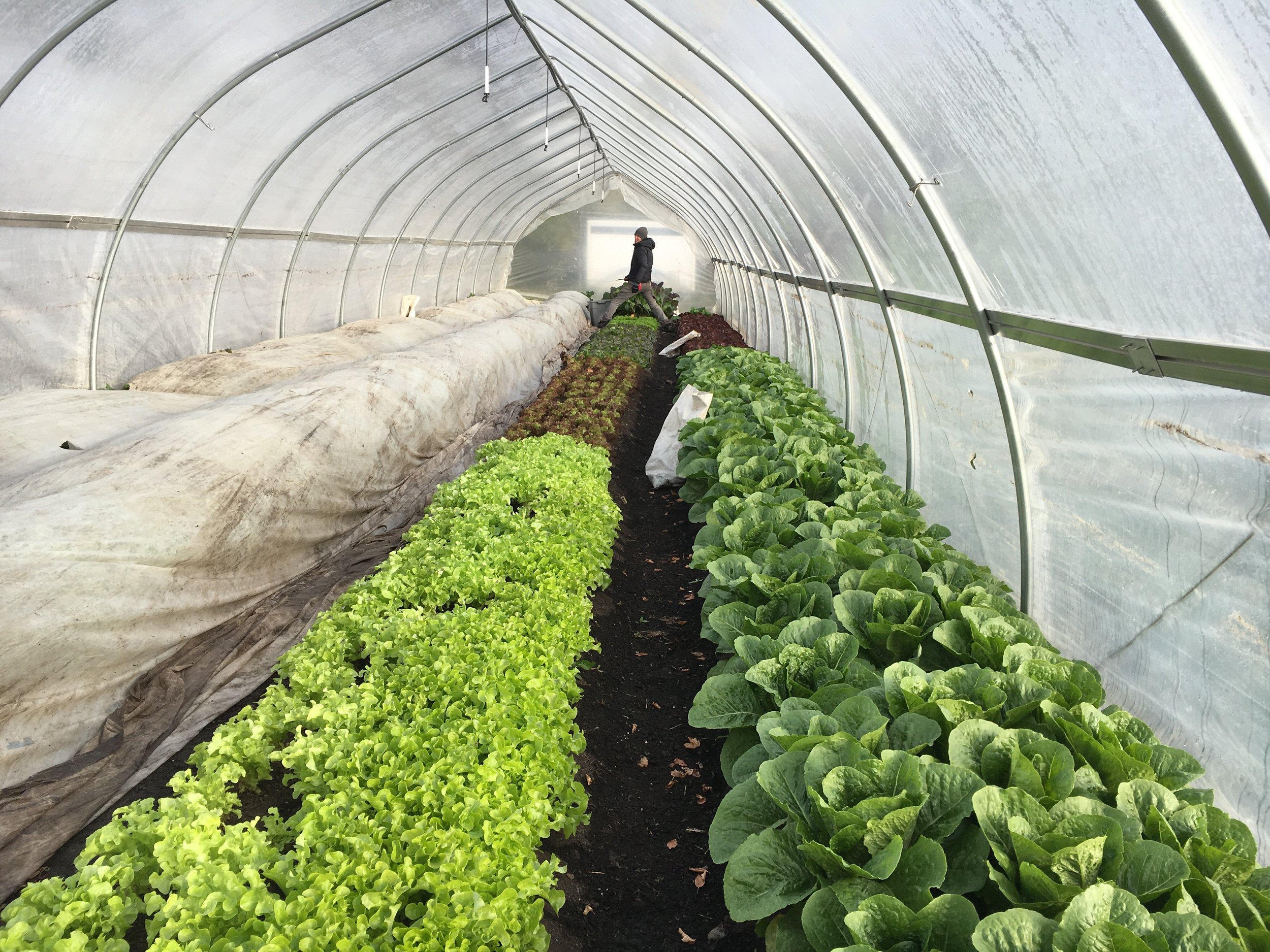OCtober 19th, 2022
What’s in your share?
Radishes
Romaine Lettuce
Salad Mix
Kohlrabi
Butternut Squash
Scallions
Yellow Storage Onions
With one week left of our CSA, we thought it would be nice to share a little 2022 (ballpark) Financial Report with y’all, as well as projections for next season. Hopefully this will provide a glimpse of where a farm such as Village Farmstead fits into the food system, the financial livelihoods of the people who work on such a farm, and the types of choices they wrestle with.
2022 Revenue Summary
June-Oct CSA 75 paid Memberships * $600 per Member = $45,000 Total
November CSA 30 paid Memberships * $125 per Member = $3,750 Total
Restaurant Sales - $3,000
Online Sales - $3,000
Ferment/Egg Sales - $1,000
Total - $55,750
2022 Expenses Summary
(Does not include “Capital Expenses” such as a new deer fence update or our new high tunnel)
Tools - $1,000
Supplies - $1,000
Organic Certification - $1,500
Compost and Amendments - $1,800
Fuel - $500
Rent - $900
Seeds - $1,750
Insurance - $600
Taxes and Fees - $600
Hired Labor - $1,200
Other Miscellaneous Items - $350
Total - $14,000
So what about the effects of inflation? For the most part, we saw a 5-10% increase in our expenses that could be fairly attributed to price-rises. Fortunately, from the categories above, this only affects tools, supplies, fuel, and seeds; while the primary disturbance related to inflation was our non-listed “capital expenses”. This year we updated our existing high tunnels to be better armed against weather events, we added a new 30x75’ high tunnel, and began installing a new deer fence. Materials for all of this cost nearly 50% more than we planned, and together the remaining $10,000 of our cash flow summary above. Our personal costs of living also took quite a hit. In the end, our 2022 personal budgets will be right around $15,000 each.
Our Salaries were $15,000 each. We did not work weekends, which was wonderful. We rarely went over 40 hours per week, and that includes an hour(ish) lunch break, mostly spent debriefing, planning, and an occasional bickerin’. By year's end, we will have worked roughly 1,500 hours each; which breaks down to roughly $10 per hour. We greatly benefitted from having Ali back 1 day per week for about 10 weeks. AND of course our Tuesday harvest crew, Meaghan, Shelby, Judy, Matt and John kicked butt for about 4 hours a week in exchange for their CSA shares.
This photo was taken two weeks ago before we covered these babies up for the remainder of the season. All of the action is happening inside the tunnels these days.
You’re probably starting to piece together the equation(s) we work with in devising different models in preparation for future seasons. The equation for figuring out our CSA revenue, very simply put is: [price per week] multiplied by [# of weeks], then multiplied by [ # of members]. Luckily, our non-labor expenses are more-or-less fixed due to our size and methods. However, in order to grow and harvest more, more labor is required; and to be honest, we really like this “weekend” thing, and after working 8 hours straight (as most workers know), quality of work starts to take a dive, and the two of us are about ready for fisticuffs.
It has long been our goal to demonstrate that our model of farming provides a financially viable living. Yes, we live in a housing co-op with considerably lower rents than our peers, we work from home, eat like champions, and get lots of exercise; but in the end, $10/hour does not fairly compensate for the skill, attention, sacrifice, and love of our craft. Next year, we are shooting to change that number to - at least - $15/hr. This will begin with NOT BUILDING ANYTHING. Building infrastructure is a costly investment, and we planned for these costs during these first five years. We now feel that we can sufficiently deal with the Wisconsin elements for hopefully the next couple years or so. Next, we are working with planting less of the crops that didn’t have all that great of returns per sq. ft. and adding more of those that did. While doing this we are using the formula above and adjusting the price/value of a share per week, adding weeks, and adding members. FINALLY, in order to keep up with increased workloads without killing ourselves or each other, Ali will be back next summer, this time about 2 days per week.
Our farm wants to accomplish these efficiencies through better planning; not cutting corners when it comes to valuing labor or the environment. We want to ensure the affordability of our CSA and measure our competitiveness aside grocery store comparisons. At the same time, when we go the extra mile, we need to be compensated fairly. Unfortunately, as long as cheap food - along with its cheap labor and environmental practices - persists, the cost of how we grow vegetables will continue to be felt by you the eater, us the farmer, or shared by both. We promise to do our best to find a good balance. But in the end we need to fight for a better food system. And in the meantime, (and always) we are eternally grateful for the trust and support you have in our farm - we LITERALLY could not do this without each of you.
Sam in the background. This is the romaine and salad mix in your share. Carrots to the left will be in next week’s!


